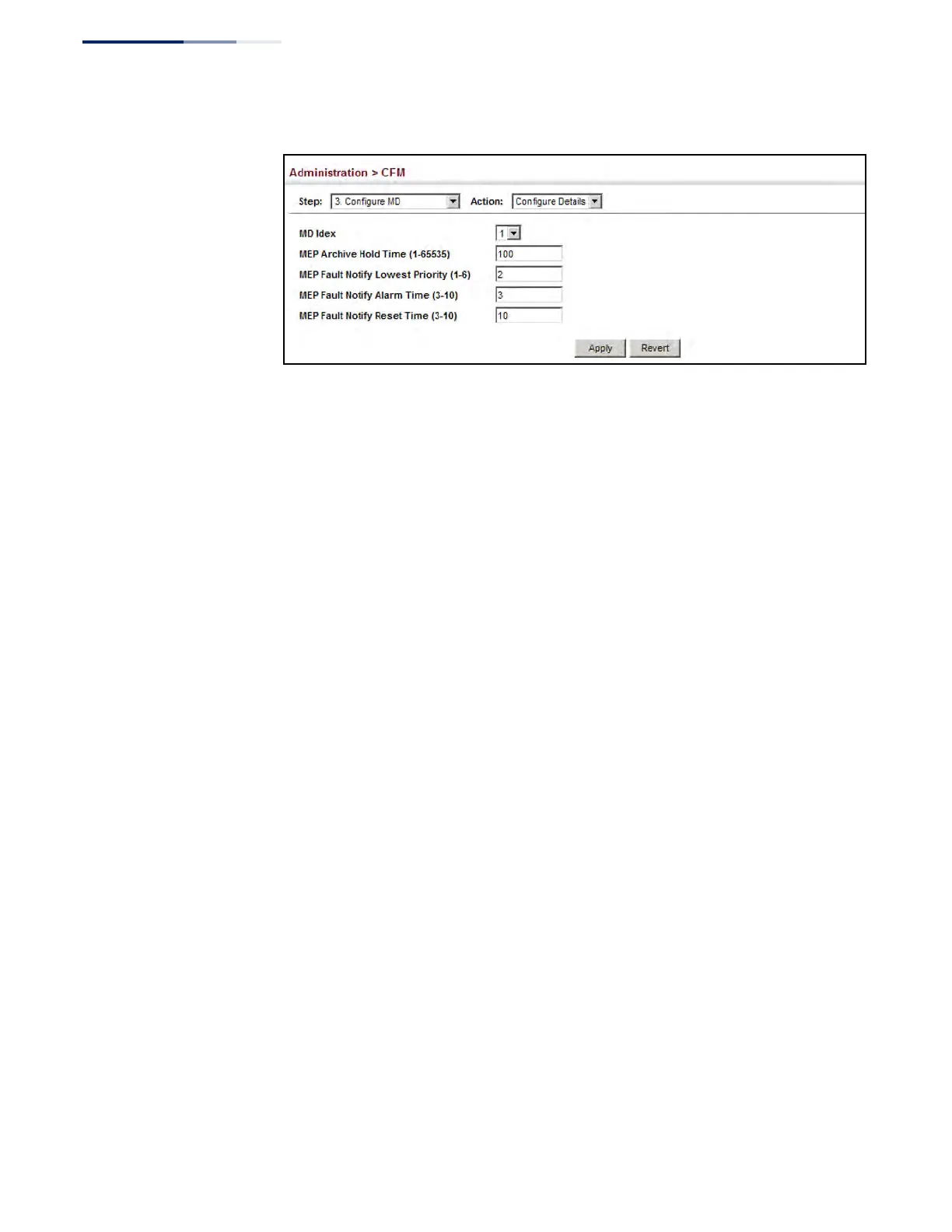Chapter 13
| Basic Administration Protocols
Connectivity Fault Management
– 500 –
Figure 308: Configuring Detailed Settings for Maintenance Domains
Configuring CFM
Maintenance
Associations
Use the Administration > CFM (Configure MA) pages to create and configure the
Maintenance Associations (MA) which define a unique CFM service instance. Each
MA can be identified by its parent MD, the MD’s maintenance level, the VLAN
assigned to the MA, and the set of maintenance end points (MEPs) assigned to it.
Command Usage
Creating a Maintenance Association
◆ Use the Configure MA – Add screen to create an MA within the selected MD,
map it to a customer service instance (S-VLAN), and set the manner in which
MIPs are created for this service instance. Then use the MEP List to assign
domain service access points (DSAPs) to this service instance (see “Configuring
Maintenance End Points” on page 504).
◆ An MA must be defined before any associated DSAPs or remote MEPs can be
assigned (see “Configuring Remote Maintenance End Points” on page 506).
◆ Multiple domains at the same maintenance level cannot have an MA on the
same VLAN (see “Configuring CFM Maintenance Domains” on page 495).
◆ Before removing an MA, first remove the MEPs assigned to it (see “Configuring
Maintenance End Points” on page 504).
◆ For a detailed description of the MIP types, refer to the Command Usage
section under “Configuring CFM Maintenance Domains” on page 495.
Configuring Detailed Settings for a Maintenance Association
◆ CCMs are multicast periodically by a MEP in order to discover other MEPs in the
same MA, and to assure connectivity to all other MEPs/MIPs in the MA.
◆ Each CCM received is checked to verify that the MEP identifier field sent in the
message does not match its own MEP ID, which would indicate a duplicate MEP
or network loop. If these error types are not found, the CCM is stored in the
MEP’s local database until aged out.

